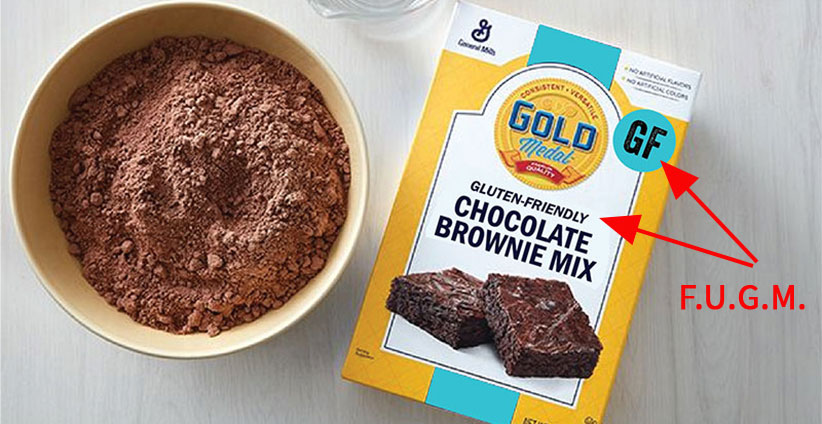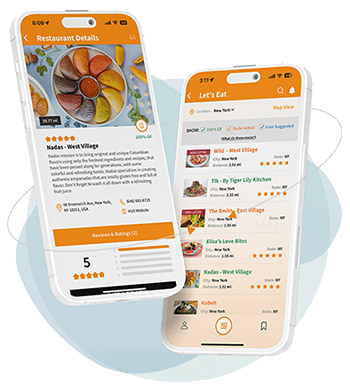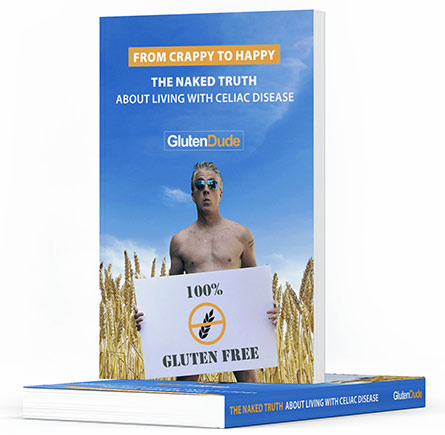Who can argue with something being friendly, right?
If something is user-friendly, it’s easy to use.
If something is environmentally-friendly, it can help save our planet.
If an apartment complex is dog-friendly, yay…my puppies are allowed!
Now let’s take a look at the official definition of “friendly”, according to our good friends at Merriam-Webster.
That sounds about right. But there is another definition of “friendly” that I want to focus on today:
And now…let’s talk about General Mills. Yes, the same company that has brought us the Cheerios debacle. What Cheerios debacle you say?
- First, GM invited me to their factory while they were still working on their soon-to-be Gluten-Free Cheerios. It didn’t go well.
- Then top advocates starting promoting them, without even knowing if they were safe or not. They weren’t.
- Then there was the recall where they got gluten in their Gluten-Free Cheerios. And people got sick.
- Then the Canadian Celiac Association made an official statement that they do not recommend celiacs eat the Cheerios. Kudos to them.
- Meanwhile the Celiac Disease Foundation continues to fully support them…and them some. Don’t get me started.
Well General Mills is at it again…to the detriment of the celiac community. They have a few new products IN DEVELOPMENT. And these products are labeled…wait for it…GLUTEN-FRIENDLY. What is gluten-friendly you say? Good question. According to GM…
In other words, odds are it won’t be safe for us to eat. Now let’s go back to that last definition of friendly: Not causing or likely to cause harm. And you tell me if this ridiculous term is apt for a product like this. Or is this product more likely to “cause us harm”.
Now look…there may be two arguments regarding this:
Argument 1 says “hey, at least they are being honest and saying it may not be safe for us to eat.” I get it and will take honesty every single time.
Argument 2 says you’re putting a GF label on a product when it is not gluten-free? Are you really creating another category for your products that says GF but it’s not remotely safe for those with celiac disease?” And yeah…this is my argument.
I’ve said hundreds of times that celiacs don’t own the term “gluten”. General Mills is a business. And the number one goal of any business is to make money. And they will do whatever it takes to reach that goal, including putting profits over people almost every damn time.
But seriously…f**k this. It makes a mockery of how we need to eat to thrive and survive. And it’s irresponsible and dangerous to those newly diagnosed who don’t the true ins and outs of our fun know little disease yet. And it sets a dangerous precedent that other companies may follow, furthering the already confusing nature of our labeling laws,
Gluten-friendly is simply not a thing. And it’s not just me. Here are what other celiac advocates are saying this am:
.@GeneralMills Appalling. Gluten-friendly Pillsbury Biscuit Dough? Way to take a term that we're hoping to get rid of & escalate it. Gluten friendly has no meaning. This is a lazy attempt to sell product instead of ensuring safety for folks w/ CD. Not good https://t.co/HQ8DfBs1Ta
— GlutenFreeWatchdog (@GFWatchdog) February 5, 2020
One of the most ridiculous things I’ve ever heard. @GeneralMills, “gluten friendly” doesn’t mean anything. It’s a BS term that the celiac community has been advocating against for years, and you just pushed it to the foreground. https://t.co/j9MeHFnIQh
— Tasty Meditation (@TastyMeditation) February 5, 2020
Hey @GeneralMills, is this like your Cheerios? Maybe they should be changed to gluten-friendly too, since they still make people sick. You’re doing it wrong…fix it. Your products are endangering the Celiac community. https://t.co/GUtNzicWr8
— Michelle's Gluten Free Kitchen (@MGFKitchen) February 5, 2020
The only sliver of light is that these products are in development and not yet on the shelves. Let’s make our voices heard. Hit them up in any manner possible.
Just be sure to make it…friendly.






I have been saying it for years, the term “gluten-friendly” is redundant, as all of their products are already friendly to those who eat gluten. If a company cannot even understand the terminology, I won’t give them my money. (Not even for my kids who can eat gluten.)
Exactly.
As the mom of a celiac kid, these ambiguous categories drive me crazy. It’s not that I’m stupid enough to buy these products for my kid. It’s that other people might, without even checking with me first, because they “thought” it was safe.
For the past 6 years since my child’s diagnosis, we have endured a constant stream of near-misses as well-meaning adults try to serve my child things they *think* are safe for her, but are not safe. They buy her “organic” cookies; they make a special dessert “just for her” using Rice Krispies; they get her a milkshake from the malt shop; they grill her no-bun burger on the backyard grill where they toasted their hot dog buns; they double-dip the ice cream scooper, the marinara sauce spoon, the butter knife, after it has already touched another gluten item.
Now, we must endure a whole new category of foods that my neighbors, class moms, and extended family will all think are “safe” when they are very clearly not.
I’ve seen reports that the FDA is finally starting to crack down on restaurants that serve dishes labeled as “gluten-free” but that do not meet the standards for gluten-free packaged foods. I would like to see a new regulation that permits restaurants and companies to advertise a product as “low gluten,” as distinguished from “gluten free,” and specifies that these are the only two representations about gluten that are permitted, so that people will not get confused. This would allow places like Panera or Dominos to serve “low gluten” products that might satisfy some people’s dietary choices, but are not Celiac-safe. I could then easily tell my neighbor or in-laws that “low gluten” is not enough, it has to be “gluten free.”
I think gluten-friendly is a really dumb way to advertise a product that has less than the standard amount of gluten. When I see “x-friendly”, I expect “x” to be there: a child-friendly event, or a dog-friendly apartment complex. So gluten-friendly, to me, would mean “gluten is welcome in this brownie mix.” But if this marketing somehow does succeed in conveying the idea that gluten-friendly means less gluten, that’s also bad news, as others have already said. I can just imagine the conversations: “Oh, don’t worry, Rebecca, it’s gluten-friendly!” Yes. Just like the owner of the off-leash dog barrelling toward me says, “Don’t worry–he’s friendly!”
Labels are already misleading enough. I agree with Lisa’s “low gluten” vs. “gluten free” idea, because there is a legitimate market for low gluten products, but these should NEVER be conflated with gluten free. I was recently suckered by the labeling on a cracker box, but with a different “GF” altogether: guilt free, of all things! It had the same “proud sponsor of the Celiac Disease Foundation” logo as their gluten free line of crackers, and the ingredients did not include wheat, but I somehow missed the “made in a factory that also makes products containing wheat.” A few days after purchasing these and seeing the wheat statement, I was incredulous–hadn’t they box said gluten free? Nope…the words in the circle logo actually said Guilt Free. I am mad at myself for being a chump, but madder at the company for misleading customers by having such risky labeling practices. They thanked me for my email and said my comments would be passed along. Meanwhile, Nut Thins are still happily ‘guilt free’ as they sponsor the Celiac Disease Foundation.
Hiya GD, I nearly missed the latest installment. Thank you for continuing to be on top of this and I’m looking forward to the app too! Lately it’s on my mind and I’ve been closing manufacturer’s questions with “did you know GD is coming out with an app?”
So basically the marketing yoyo’s in GM have no idea how to market. They have the money to make a GF facility, and they could rent that facility to small businesses to make even more money than just on their own products. But they don’t because it’s easier to change the words on a box and “sorta” lie. When they do that, they lose the marketing goodwill and potential free word of mouth from the very community they’re supposed to be marketing to.
Even if you did believe in Argument 1, the acronym GF should offend you. You can’t even draw the outline of Mickey Mouse without Disney getting growly. Well the GF label is even more of a rip off. Actually the FDA should step in because it’s an obvious attempt to intentionally confuse labeling.
What gets me is, why do they bother? Why rile up the Celiac community with something like this at all? Did sales actually drop significantly because 1% of the population, some of whom don’t like cereal for breakfast anyway, stopped buying it? I doubt that. This feels malicious to me. It might not be malicious, but it seems that way.
Anyway they have a long history of false claims like “heart healthy” and “lowers cholesterol” and such nonsense. I’d even question “nutritious” on such heavily processed foods. If I boil some rice in milk, I’ll get a lower sugar, more nutritious food. So basically I think their problem is that their product is of low quality and they can only cover it by writing faddish nonsense on the labels.
I am seeking labeling advice. I work in a traditional and rural bakery, as in – we bake our bread, cookies, pies, cakes, frozen dinners, etc from scratch and daily we have customers coming in demanding gluten free items(insert above list). I have many allergies myself so I am sensitive to their need for safe treats but we are small (1 display case, 1 freezer, 1 kitchen, 2 shared ovens). Even if we wash and sanitize the bakery between products, have specially designated baking pans and mixing bowls and use no gluten in the recipe what so ever(all steps we do), I don’t believe our product to be entirely “gluten free”. Yet, the demands keep coming. All I can tell folks is that there is “no intentional gluten” in the product. (I know-pointless) How can I label my baking so people will understand? “Gluten friendly” doesn’t work for me.
Here in Australia, ‘gluten friendly’ is an illegal label though it would be nice if the restaurant and catering industries in my area would take notice of this fact.